Sanitary Butterfly Valves are more like mechanical switches that have the ability to turn pipes on and off or control the amount of product flowing through. As a leading sanitary butterfly valves manufacturers, we would like to tell you all that you should know about valves before actually using or purchasing them.
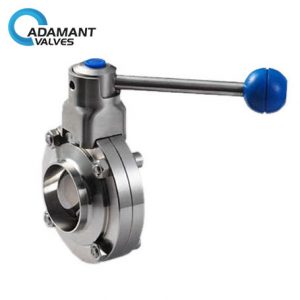
What is sanitary butterfly valve?
The opening and closing member of a sanitary butterfly valve is a disc-shaped butterfly plate, which rotates around its own axis in the sanitary valve body to achieve the purpose of opening, closing and regulating. Full opening to full closure of a butterfly valve is usually less than 900. The butterfly valve and butterfly rod themselves don’t have self-locking capabilities. In order to position the butterfly plate, a worm-wheel reducer needs to be installed on the valve rod. Using a worm-wheel reducer not only makes the butterfly plate have self-locking capabilities, which make the butterfly plate stop at any positions, but also improve the operating performance of valves.
What are the advantages of sanitary butterfly valves?
1. The butterfly valve rubber sealing and valve plates are imported, ensuring the performance and service life of the butterfly valve.
2. High-precision CNC is used to lathe the valve to ensure reliable interchangeability of the butterfly valve, saving the trouble of uncertain performance due to change of rubbers.
3. Nylon sleeve is inlaid into the valve stem so the opening and closing are easy and flexible due to reduced friction.
4. Steel parts are all stainless steel, rubbers are all food-grade rubbers, so the sanitation level is high.
5. The valve body diameter is equal to that of the pipeline, and narrow and streamlined valve plate, when open, is in the same direction with the fluid, which results in large flow and small resistance, causing no material accumulation.
6. There are wrench type and pull type for handles, which can withstand big operating torque and is not prone to wrench-off.
7. Opening and closing range is 0 to 90 degrees. It can be fixed at positions in every 15 degrees. And it’s adjustable, easy to open and close and operate.
What are the types of sanitary butterfly valves?
BV6 sanitary butterfly valves
They are suitable for many applications in stainless steel piping systems. BV6 actuators are available in three standard variants. These are (NC) normally closed, (NO) normally open and (A / A) activated by air. The actuator works by transforming the axial movement of a piston into a 90-degree rotation of the valve shaft.
When the valve disc located near the valve body contacts the butterfly valve seal, the actuator torque is increased. The valve then closes. By selecting different hand grips such as closed, open, central and other positions, the valve can be mechanically locked in different positions. These positions regulate the flow at the desired flow rate.
Split sanitary butterfly valves
These are designed to eliminate any contamination of the atmosphere during the transfer of powders. In the laboratory or production process, a dust-free charge or discharge is expected. These valves provide high containment in the sampling, loading or unloading process. Split butterfly valves consist of an active and passive half. While the active half is a driving half. The passive half is half driven. The two halves fit together along their particular axis of rotation. The discs are sealed on the outside using a metal seal.
Dixon steel sanitary butterfly valves
These valves can be used as throttling valves for flow control or as stop valves with on/off service. Although their design is simple and robust, they are very reliable. They are available in models that can be operated pneumatically or electrically. No silicone lubricants are used in the assembly of these sanitary butterfly valves.
What are the applications of sanitary butterfly valves?
1. In general, in throttling, regulation and mud medium, it is required that the structural length is short, the opening and closing be quick. For low-pressure shut-off, it’s recommended to use sanitary butterfly valve.
2. Centerline butterfly valve is suitable for freshwater, sewage, seawater, brine, steam, natural gas, food, medicine, oil and other products that require complete sealing, zero gas leakage, long service life, operating temperature of -10~150 degrees Celsius.
3. The metal-to-metal linear sealing double eccentric butterfly valve is suitable for urban heating, gas supply, water supply and gas, oil, acid and other pipelines as regulating and shut-off device.
4. The soft eccentric butterfly valve is suitable for the two-way opening and closing and regulation of ventilation and dust-wiping pipelines. It is widely used in metallurgy, light industry, electricity, and gas pipelines and waterways of petrochemical systems.
How to select metals of sanitary butterfly valves?
Carbon is the main element in a carbon and steel alloy without any other added material added to the mix to control its properties.
It is an iron alloy and a minimum amount of chromium: chromium oxide on the surface of the material is protective since it forms an impenetrable layer. Mechanical damage such as scraping breaks the surface; Chromium reacts very fast with oxygen in the air to prevent it from reacting with iron and forming rust (iron oxide). Stainless steel is also classified as martensitic, ferritic, duplex and austenitic, while it can also be hardened by precipitation due to its microstructure due to its various alloying properties. Austenitic and duplex are the most popular grades for valve construction.
The sanitary butterfly valve is clearly not a high pressure valve. Listed below are typical pressure ratings:

How to maintain sanitary butterfly valves?
1. During application of sanitary butterfly valve, it should always be kept clean. The drive thread must be lubricated regularly. When the fault is found, it should be stopped immediately to find out the reason to clear the fault.
2. Packing gland bolts should be evenly tightened, which should not be pressed into a crooked state, so as not to hinder the stem movement or cause leakage.
3. When it is installed, the valve can be connected directly on the pipeline. Under normal circumstances, it can be installed anywhere in the pipeline, but the position is best to facilitate the operation of the overhaul. Note that the flow of stop-valve media should be vertical flap up the flow, and lifting check valve can only be installed horizontally.
For more information, please visit http://www.adamantvalves.com/
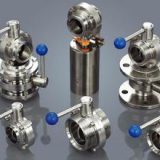
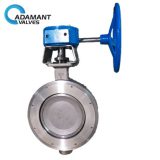
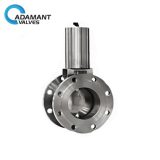

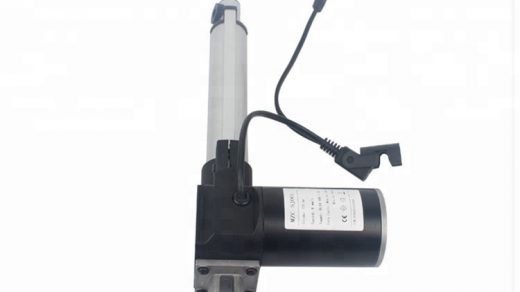

Recent Comments